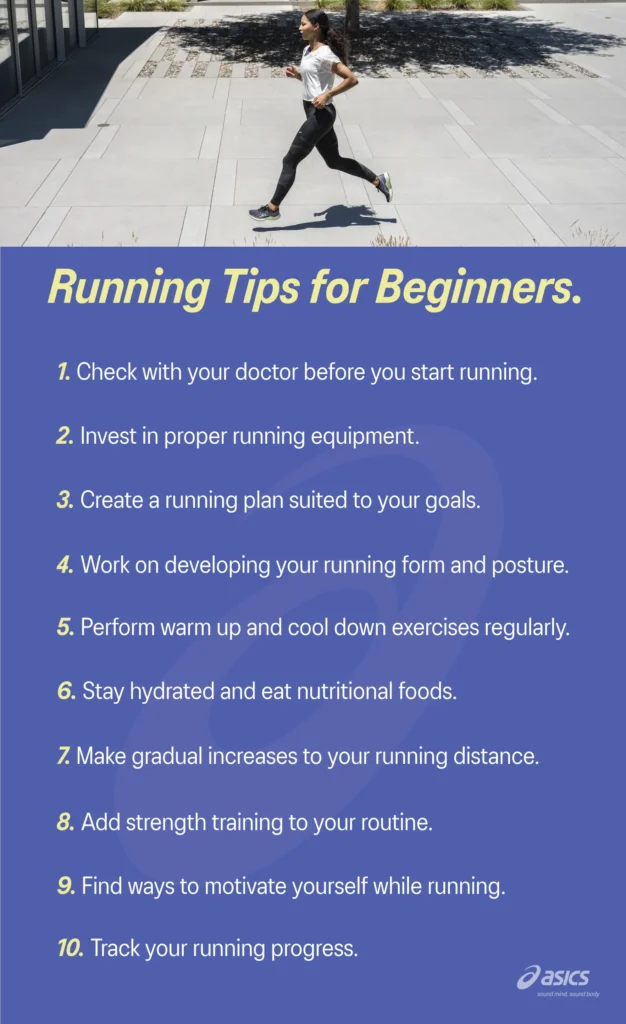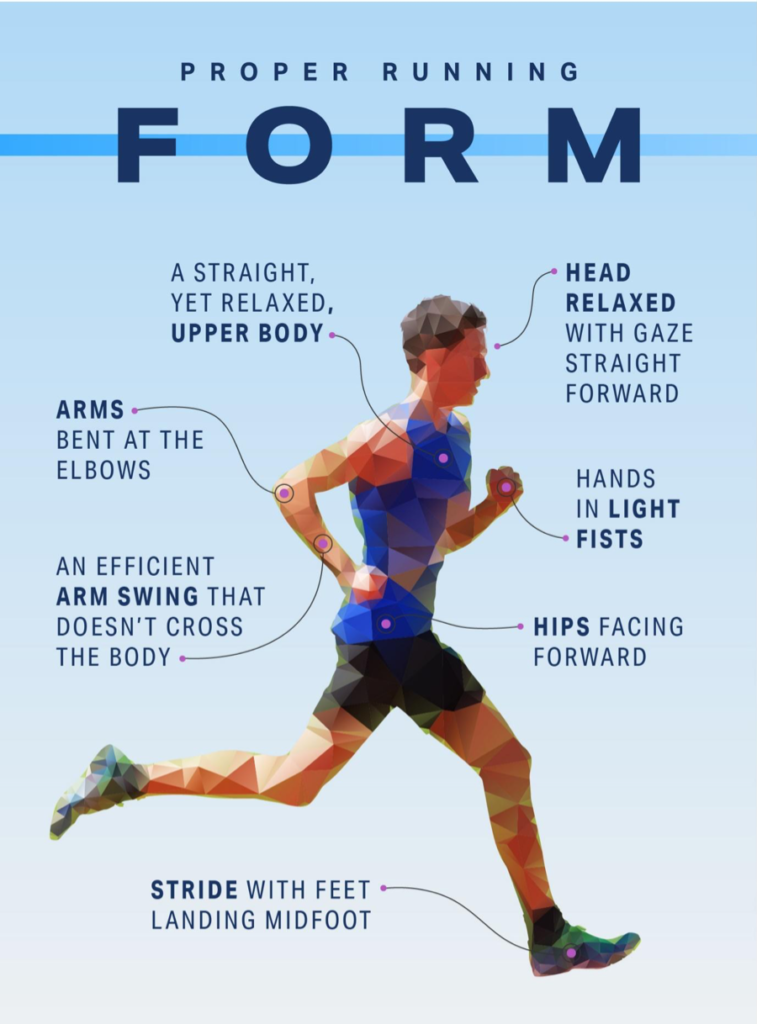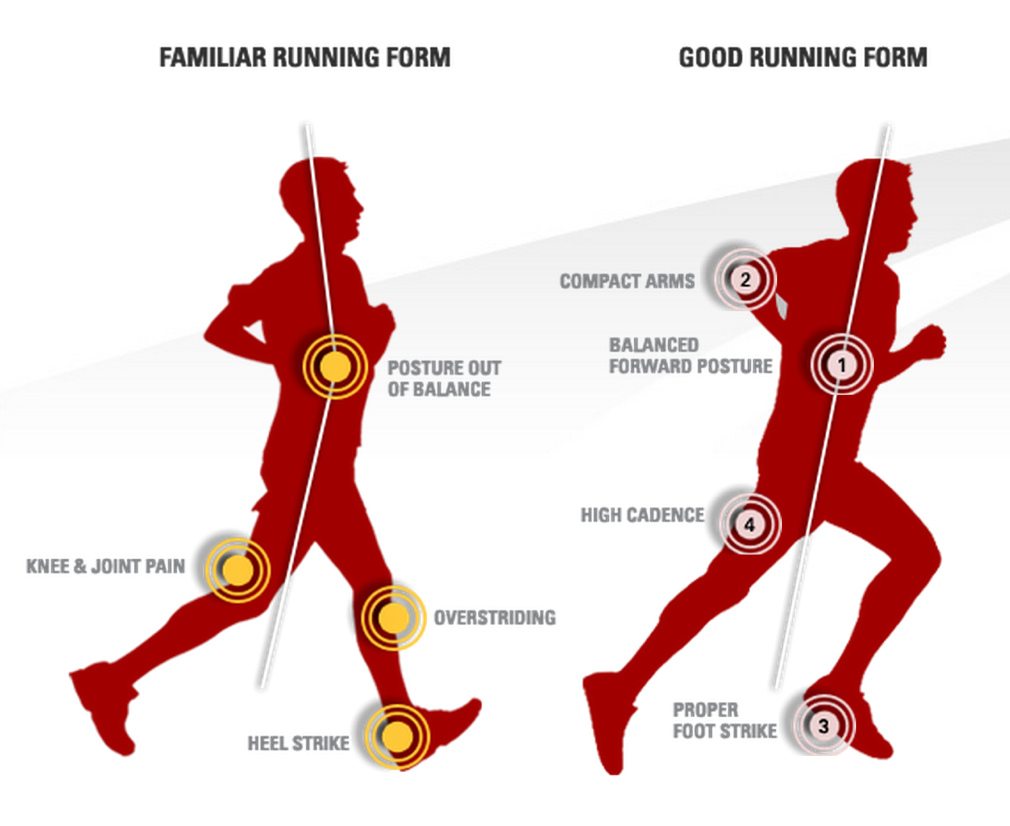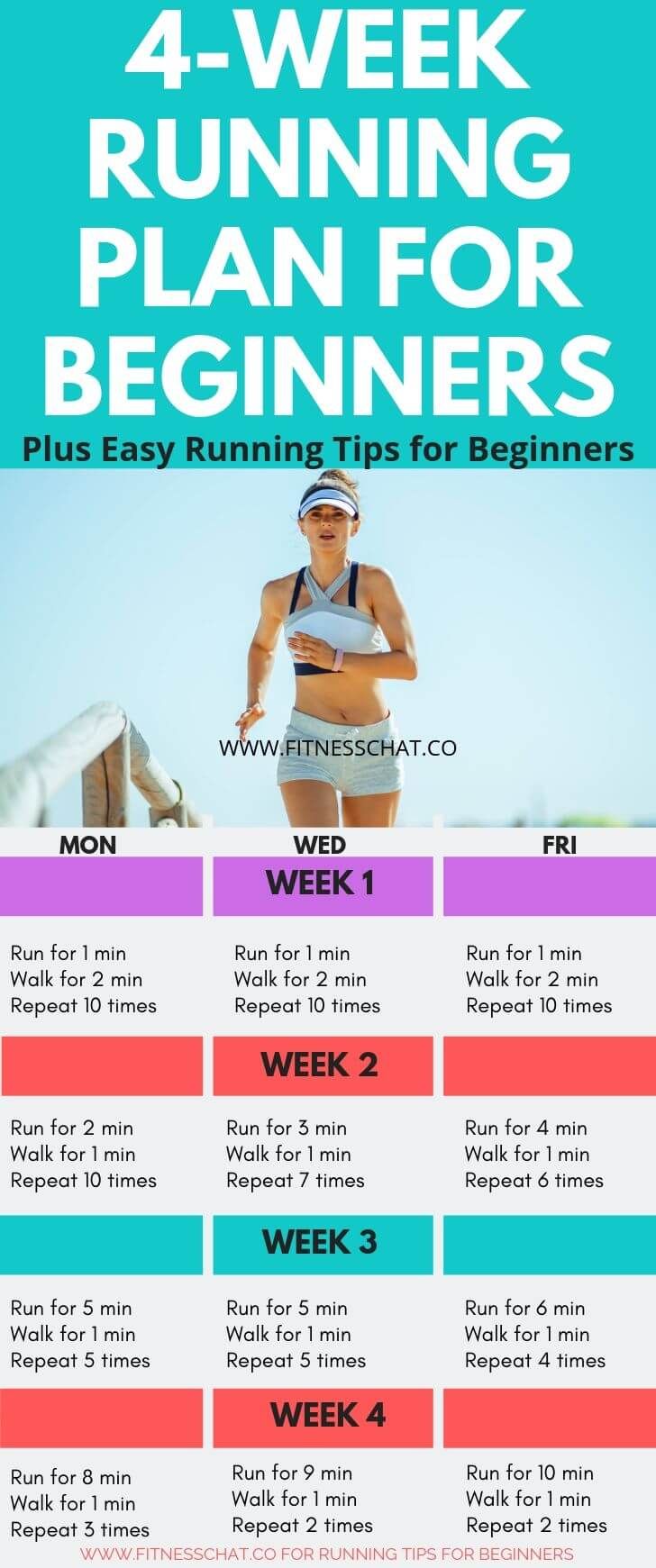Running is a great way to stay fit and healthy. It can be daunting for beginners though.
Starting a running routine can seem overwhelming, especially if you are new to it. But don’t worry! With the right tips and a bit of dedication, anyone can become a decent runner. Running offers numerous benefits. It improves cardiovascular health, boosts mood, and helps with weight management.
Whether you aim to run a marathon or just want to stay active, starting off right is crucial. In this blog post, we will share some essential running tips for beginners. These tips will help you start your running journey smoothly and safely. So, lace up your shoes and get ready to hit the pavement!
Getting Started
Running is a great way to stay fit and healthy. If you’re new to running, getting started can feel overwhelming. Don’t worry! This guide will help you ease into a running routine. Let’s dive into the basics and get you on the right track.
Choosing The Right Gear
Before you begin, it’s essential to have the right gear. Proper gear can prevent injuries and improve your running experience. Here are some key items to consider:
- Running Shoes: Invest in a good pair of running shoes. Visit a specialty store for a fitting.
- Comfortable Clothing: Wear moisture-wicking fabrics to stay dry and comfortable.
- Running Socks: Choose socks that prevent blisters and provide support.
- Water Bottle: Stay hydrated with a reusable water bottle.
- Watch: A basic watch can help you track your time and progress.
Setting Realistic Goals
Setting goals is crucial for staying motivated and tracking progress. Start with small, achievable goals and gradually increase your targets. Here’s a simple plan to get you started:
- Week 1-2: Aim to run for 10 minutes, three times a week.
- Week 3-4: Increase your running time to 20 minutes, three times a week.
- Week 5-6: Aim for 30 minutes of running, three times a week.
Remember to listen to your body and adjust your goals as needed. Celebrate your achievements, no matter how small. Consistency is key to building a successful running routine.

Warm-up Essentials
Starting your run without a proper warm-up can lead to injuries. Proper warm-up sets the tone for your run. It helps increase blood flow and flexibility.
Dynamic Stretches
Dynamic stretches are essential before running. They prepare your muscles for activity. Here are some effective dynamic stretches:
- Leg Swings: Stand on one leg and swing the other leg back and forth. Repeat on both sides.
- High Knees: Run in place, lifting your knees as high as possible.
- Butt Kicks: Run in place, kicking your heels towards your glutes.
- Arm Circles: Extend your arms out to the sides and make circles.
Gradual Pace Increase
Start your run slowly. Gradually increase your pace. This helps your body adjust to the workout. Follow these steps:
- Begin with a brisk walk for 5 minutes.
- Transition to a light jog for 5-10 minutes.
- Slowly increase your speed to your desired running pace.
- Jog for as long as you comfortably can, transition to brisk walking for 5 minutes and repeat.
A gradual pace increase prevents sudden strain on your muscles. It also helps your heart rate rise steadily. Always listen to your body. Stop if you feel pain or discomfort.
Proper Running Form
Running with the proper form can prevent injuries and boost efficiency. It helps you run longer and faster without extra effort. Here are some essential tips to ensure you maintain proper running form.
Posture And Alignment
Keep your body upright and relaxed. Avoid slouching. Your head should be aligned with your spine. Look ahead, not down. Keep your shoulders relaxed and away from your ears. Your arms should swing at your sides, not across your body. Bend your elbows at a 90-degree angle.
Engage your core for stability. Avoid leaning forward or backward. Your hips should be level, not tilted. Keep your knees slightly bent to absorb impact. These adjustments will help you maintain a balanced posture.
Foot Strike Techniques
How your foot hits the ground matters. Aim for a mid-foot strike. Landing on the balls of your feet can strain your calves. Landing on your heels can cause joint pain. A mid-foot strike distributes the impact evenly.
Keep your strides short and quick. Overstriding can lead to injuries. Your feet should land beneath your body. This reduces stress on your knees and hips. Aim for a cadence of 120-140 steps per minute and increase as your fitness level rises.
Focus on a light and quiet step. This reduces the impact on your joints. Listen to your footsteps. Loud steps may indicate heavy landing. Adjust your form to reduce noise.

Breathing Techniques
As a beginner runner, mastering the right breathing techniques is crucial. Proper breathing can enhance your performance and make running more enjoyable. Here are some effective techniques to help you breathe better while running.
Rhythmic Breathing
Rhythmic breathing involves syncing your breaths with your steps. This method helps balance the stress on your body and improves efficiency. Try the following pattern:
- Inhale for three steps
- Exhale for two steps
This 3:2 ratio allows more oxygen intake, enhancing your stamina.
Nose Vs. Mouth Breathing
Many beginners wonder whether to breathe through their nose or mouth. Here’s a quick comparison:
| Breathing Method | Pros | Cons |
|---|---|---|
| Nose Breathing | Warms & filters air, prevents dry throat | May not provide enough oxygen |
| Mouth Breathing | More oxygen intake, suitable for intense runs | Can dry out mouth & throat |
For most beginners, combining both methods is effective. Start by inhaling through your nose and exhaling through your mouth. This technique ensures you get enough oxygen while keeping your throat from drying out.
Building Endurance
Building endurance is crucial for beginner runners. Without proper endurance, long runs become difficult. Consistent training can help you increase your stamina. This guide will provide useful tips to build your endurance efficiently.
Interval Training
Interval training involves alternating between high and low intensity. This method improves cardiovascular fitness. Start with short bursts of fast running. Follow these with periods of slow jogging or walking. This approach trains your heart and muscles. Over time, you will run longer distances with less effort.
Consistent Practice
Consistency is key to building endurance. Set a regular running schedule. Stick to it. Aim to run at least three times a week. Gradually increase your distance. Small, steady improvements lead to big gains. Your body will adapt and become stronger.

Preventing Injuries
Running is a great way to stay fit, but beginners are prone to injuries. Preventing injuries is essential for a consistent and enjoyable running experience. By following a few key tips, you can minimise the risk of injury and keep running safely.
Listening To Your Body
Your body sends signals when something is wrong. Listening to your body is crucial to prevent injuries. If you feel pain, stop running and rest. Pushing through pain can lead to serious injuries. Take note of any discomfort and adjust your training accordingly.
Start with a warm-up. Warming up prepares your muscles and joints for the run. A good warm-up includes dynamic stretches like leg swings and arm circles. After your run, cool down with gentle stretches to help your muscles recover.
Gradually increase your distance and intensity. Sudden increases can strain your muscles and ligaments. Follow the 10% rule: Increase your weekly distance by no more than 10%. This gradual approach helps your body adapt to the new demands and helps you to build endurance.
Common Running Injuries
Understanding common running injuries can help you avoid them. Here are some injuries to watch out for:
| Injury | Symptoms | Prevention |
|---|---|---|
| Runner’s Knee | Pain around or behind the kneecap | Strengthen quads, avoid downhill running |
| Shin Splints | Pain along the shinbone | Wear proper shoes, run on softer surfaces |
| Plantar Fasciitis | Heel pain, especially in the morning | Stretch calves, wear supportive footwear |
| IT Band Syndrome | Pain on the outside of the knee | Foam roll IT band, strengthen hips |
Proper footwear is essential. Choose running shoes that fit well and provide adequate support. Replace them every 300-500 miles. Running in worn-out shoes increases the risk of injury.
Stay hydrated and eat a balanced diet. Proper nutrition and hydration help your body recover and prevent injuries. Dehydration can lead to muscle cramps and fatigue, increasing the risk of injury.
Nutrition And Hydration
Proper nutrition and hydration are essential for beginner runners. They help maintain energy, improve performance, and aid in recovery. Understanding what to eat and drink before, during, and after your run can make a significant difference in your running experience.
Pre-run Fuel
Eating the right foods before a run boosts your energy levels. Aim to consume a balanced meal or snack 1-2 hours before running. Focus on complex carbohydrates for sustained energy. Examples include:
- Oatmeal with fruits
- Whole grain toast with peanut butter
- Bananas
Ensure you include a small amount of protein to aid muscle function. Ideal sources are:
- Greek yogurt
- Eggs
- Nuts
- Protein Shake
Hydration Tips
Staying hydrated is crucial for all runners. Drink water throughout the day, not just before your run. Here are some essential hydration tips:
- Drink at least 8-10 glasses of water daily.
- Consume 1-2 glasses of water an hour before running.
- Carry a water bottle if running longer than 30 minutes.
- Consider sports drinks for runs over an hour. They replace lost electrolytes.
Post-run hydration helps with recovery. Rehydrate within 30 minutes after running. Use this simple table to guide your hydration needs:
| Run Duration | Water Intake |
|---|---|
| Less than 30 minutes | 1-2 glasses |
| 30-60 minutes | 2-3 glasses |
| More than 60 minutes | 3-4 glasses or sports drink |
Remember, the key to successful running is consistency in your nutrition and hydration habits. Stay hydrated, eat well, and enjoy your runs!
Staying Motivated
Starting a new running routine can be tough, but staying motivated is key to success. Keeping yourself inspired will help you stick to your goals and see results. Here are some practical tips to keep your spirits high and your feet moving.
Tracking Progress
One of the best ways to stay motivated is to track your progress. Seeing how far you’ve come can be very encouraging. You can use a running app or a simple journal. Here’s a table to help you track key metrics:
| Date | Distance (km) | Time (minutes) | Notes |
|---|---|---|---|
| 01/01/2023 | 2 | 15 | Felt good, weather was cool |
| 01/02/2023 | 2.5 | 20 | Struggled with hills |
Regularly updating your progress can show you how much you’ve improved. It helps you stay on track and push yourself further.
Joining A Running Group
Running alone can sometimes be lonely. Joining or starting a running group can provide the support and camaraderie you need. Here are some benefits:
- Accountability: You’re more likely to show up if others are waiting for you.
- Support: Fellow runners can offer tips and encouragement.
- Social Interaction: Meeting new people can make running more enjoyable.
Check local community boards or online groups to find running clubs near you. Many groups welcome beginners and offer different pace options. Join The Waite and Sea VIP Community here
Frequently Asked Questions
What Is The Best Time To Run?
Early morning or late evening are the best times. These times offer cooler temperatures and less traffic. It can help you avoid heat exhaustion.
How Should Beginners Start Running?
Start with a mix of running and walking. Gradually increase the running intervals. Aim for consistency over speed.
How Often Should Beginners Run?
Begin with 3 to 4 days a week. Allow rest days in between. This helps your body adapt and recover.
What Should I Eat Before Running?
Eat a small, balanced meal 1-2 hours before. Include carbohydrates and a bit of protein. Avoid heavy or greasy foods.
Conclusion
Starting a running routine can be challenging but rewarding. Remember to pace yourself. Begin with short distances. Gradually increase your distance. Listen to your body. Rest when needed. Enjoy the process. Running improves fitness and mental health. Stay consistent. Celebrate small victories.
Join a running community for support. Keep a positive mindset. With time, you’ll see progress. Lace up, hit the road, and happy running!
Enjoy your health and fitness journey
Waite and Sea -BECOME AMAZING






